The japanese indigo dyers call preparing new indigo küpe as “Building Indigo/ 藍を建てる”. The “traditional” way is to use fermented indigo leaves (sukumo) with ash water (potash, K2CO3), ground seashells or limestone (CaO), Sake rice wine, cooked Fusuma (Bran powder)… so on.
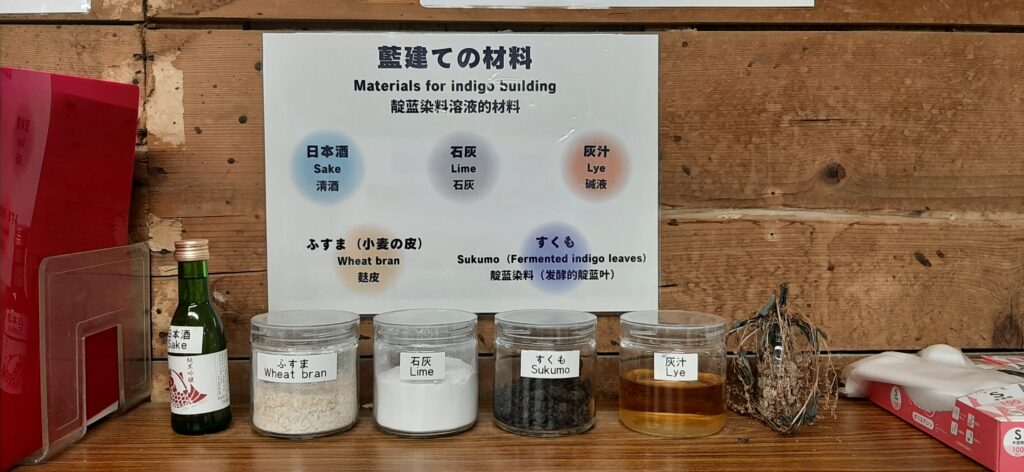
The process takes 8-10 days. (or longer) Here is what was explained at the Ai-no-Yakata.
Day 1: Motoishi (beginning stone)
Mix Sukumo with small amount of potash water. Mix every 3 hours
Day 2:
Add sake and limestone/calk and mix well. Mix every 3 hours
Day 3:
The fermentation proceeds and starts to see the surface turning to purple color. Mix every 3 hours
Day 4: Nakaishi (middle stone)
Add more limestone/calk
Day7: Akuage
Add potash water to the full amount of küpe/vat
Day 8: Tomeish (stopping stone)
Add last limestone/calk and cooked bran
After this Tomeishi, one needs to wait for 2-few days before start dying with this küpe/vat.
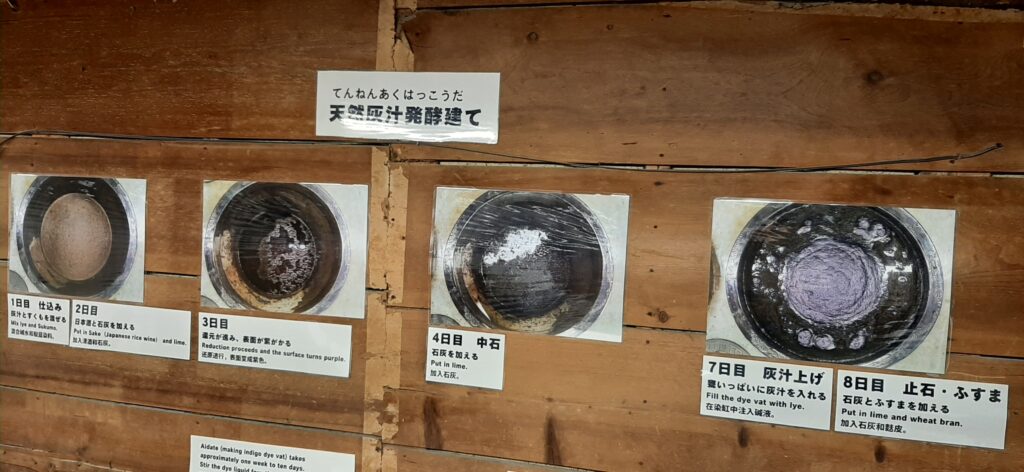
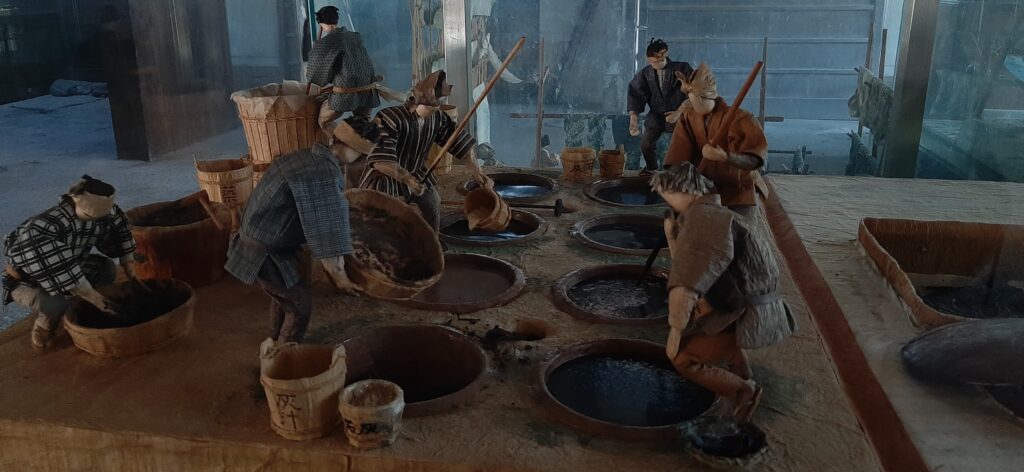
Below videos are from another facilities/professionals, but the basic principle are similar to what is explained above.
Another type of sukumo indigo vat using only sukumo and potash and Calk. It is explained that the vat lasts longer this way.
How to make potash
Potash/water taken through ash production and storing space at Ai-no-Yakata. They make 1st blew, 2nd blew, 3rd blew… from one batch of ash. The first blew potash is the strongest in base. They use 1st blew to make new küpe, and other ones to adjust the pH as the küpe gets used.
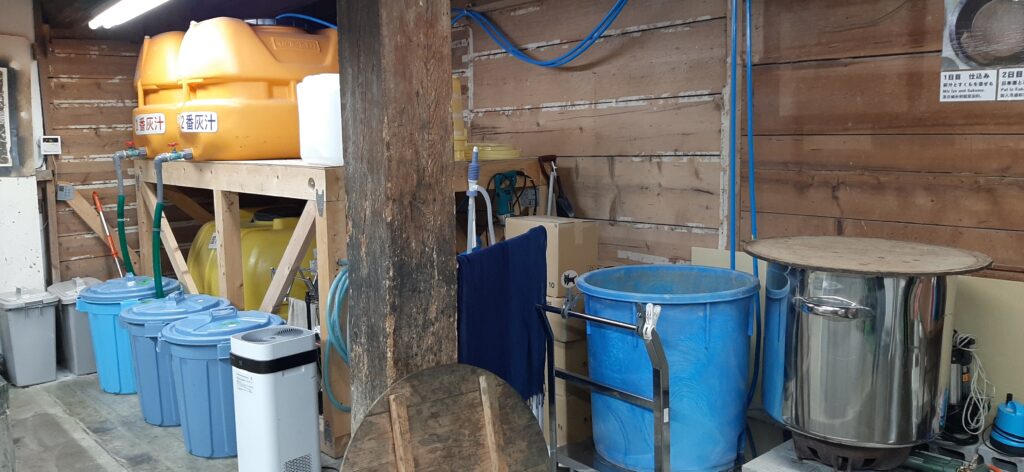
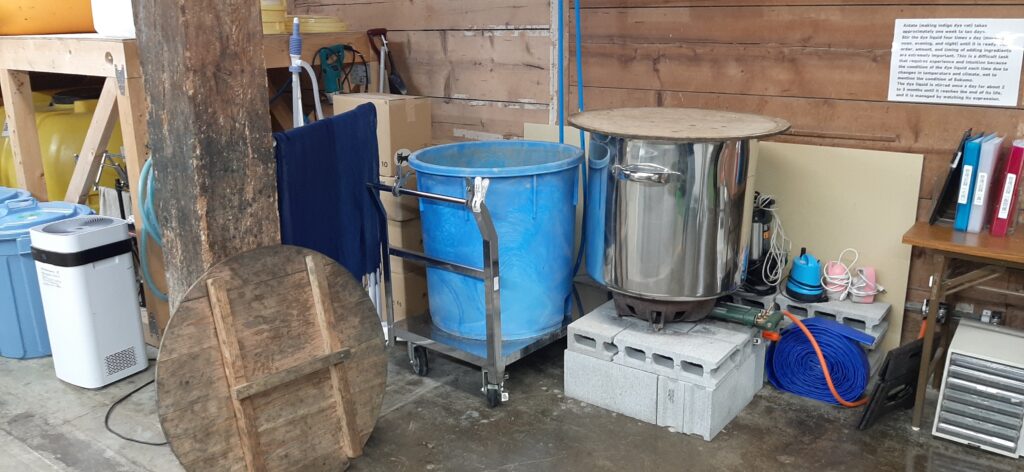
This is the potash making tools at Furusyo. They get ash from a local power plant which uses wood chip from thinning woods. They used to get ash from smoked fish factory in Shizuoka, but unfortunately the factory closed off few years ago. They also blew 1st, 2nd, 3rd… blew of potash.
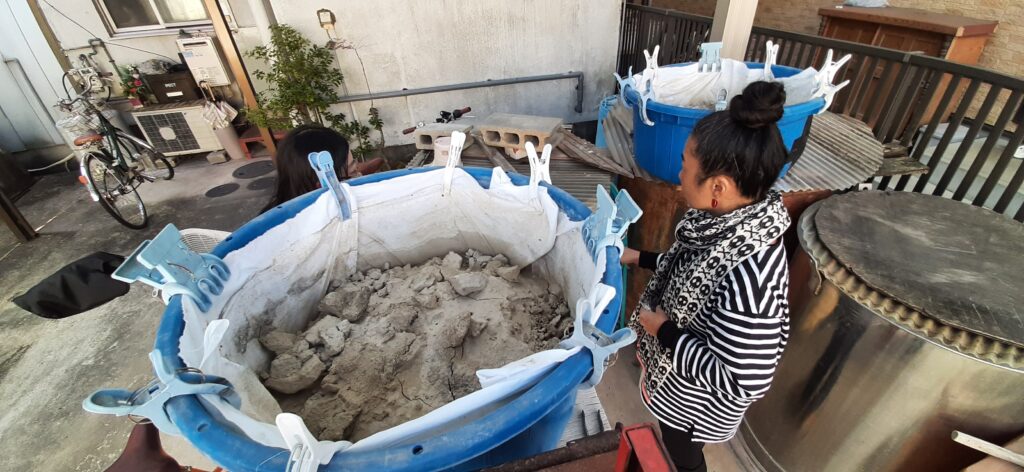
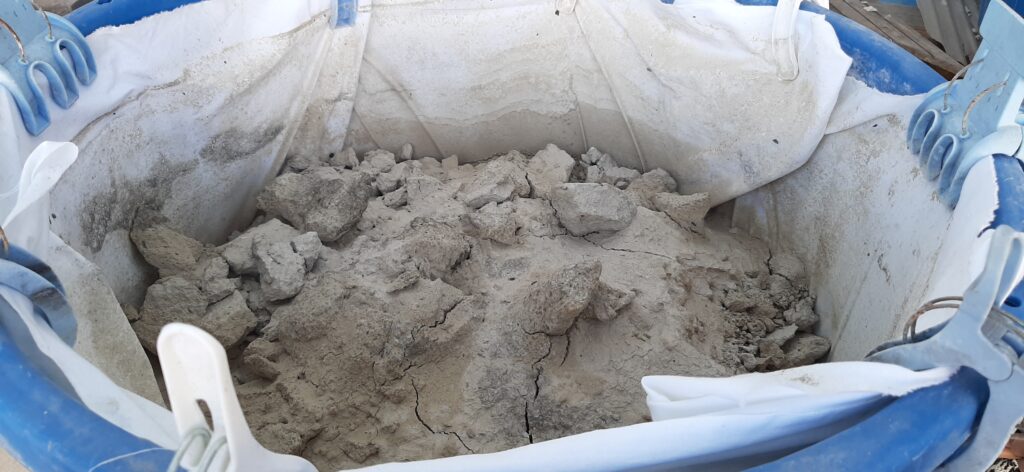
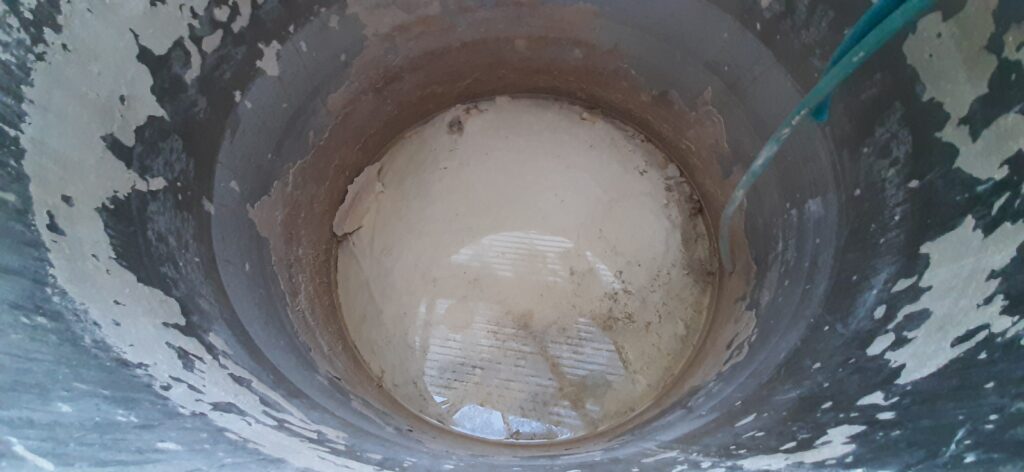
*The potash water is heated up (probably close to boil) before added to the vat to reduce the oxygen in the liquid to help the reduction process in the vat.